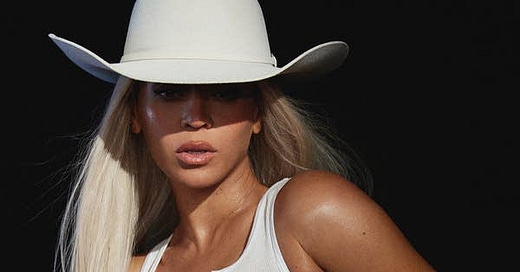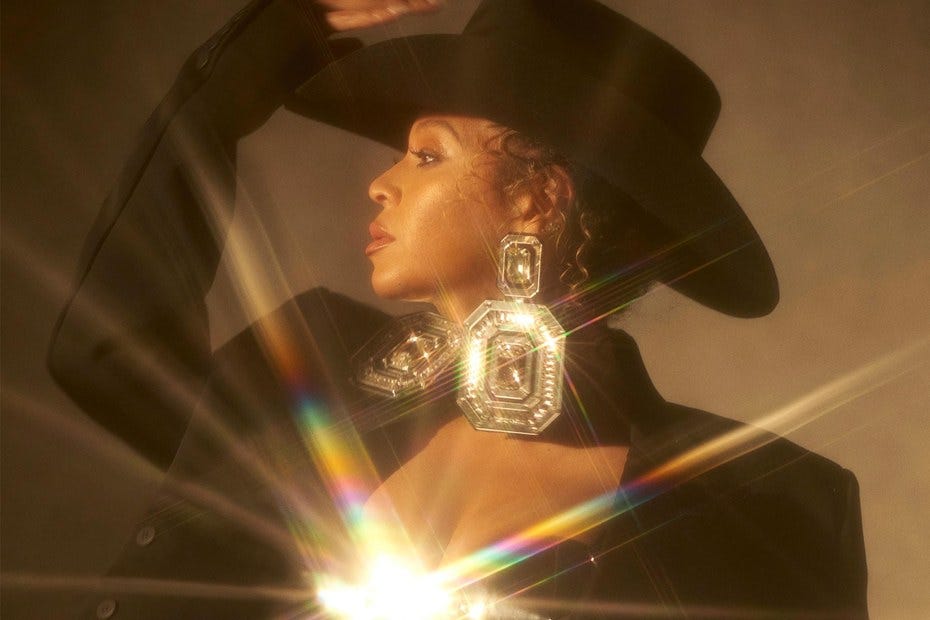There’s this Oscar Wilde quote that you may have only partially heard. It gets shortened all the time, ironically to excuse those implicated, but Wilde once said, “Imitation is the sincerest form of flattery that mediocrity can pay to greatness.”
I’m not sure that I’m willing to go that far in every case, but I do know that a white man named Jimmie Rodgers is called the “Father of Country Music”. I know Jimmie was born in Meridian, Mississippi on September 8, 1897. I know he didn’t record until he was 29 years old and that 1927 debut recording was a guitar-strummed waltz called “Sleep, Baby, Sleep”. That recording introduced the world to Jimmie’s signature yodeling style of singing that earned him the nickname, “America’s Blue Yodeler”.
I also know the first recording of “Sleep, Baby, Sleep” took place four years earlier in 1923. And that it was performed by Charles Anderson, a Black blues pioneer with a signature yodeling style of singing and of whom you have probably never heard.
I know Merle Travis was born in on November 29, 1917. I know he began playing the guitar at age twelve and by the time he was 29 he’d released his very first single. That single was “Cincinnati Lou” and it was a huge hit. Soon Travis would become a genuine Country Music Star and eventually even a legend.
Travis owed much of his success to his unique style of countrified guitar picking. He played the bass strings with his thumb and treble and melody with his finger. It was a kind of magic trick that sounded like two guitars being played at once. This fingerstyle was so breathtaking that it became known as Travis Picking, named, naturally, after the Country phenom himself. The style went on to influence other famous country guitar pickers like Chet Atkins, for example. Travis’ fingerstyle was so influential, you could cue up YouTube right now and find nearly infinite Travis Picking tutorials.
But, the thing is, that fingerstyle wasn’t unique. At all. In fact, it was a very common approach to playing the guitar. It was so common that Charley Patton, Mississippi John Hurt, Furry Lewis, Blind Willie Johnson, Blind Blake and Blind Lemon Jefferson—just off the top of my head—all recorded songs using that fingerstyle approach before Travis even picked up a guitar. Also, while Patton, Hurt and Lewis were all from Mississippi, Johnson and Jefferson were from Texas and Blake was speculated to be from Virginia, Florida or Georgia. This fingerstyle approach to playing was very common.
So, why was the style named after Travis and none of the other players I just mentioned? Why was Jimmie Rodgers called “America’s Blue Yodeler” instead of Charles Anderson? Well, if the question is “Why does a white man get credit for inventing something that Black people had already been doing?” I would like to welcome you to the United States of America.
In 1923, a Black, Kentucky-born musician named Sylvester Weaver was the first to be recorded performing that common American fingerstyle. Weaver used this approach in his song “Guitar Rag”. During this session Weaver also recorded “Guitar Blues” and these were the very first recordings of what would eventually be called acoustic blues or Country Blues music.
Just about thirteen years later, Bob Wills and his Texas Playboys would solidify the Country Music subgenre of Western Swing with their seminal hit “Steel Guitar Rag”. Even though the song is a note-for-note full-band riff off of Weaver’s “Guitar Rag”, Wills’ steel guitar player Leon McAuliffe was credited with having written the song as though it were not mediocrity imitating greatness.
Genre in American music has largely been used as a tool of white supremacy. You can clearly see this in any number of ways. First off, from the 1920s-1940s pretty much all recordings of Black musicians got classified as “race records”. This meant a woman singing a spare and haunting lament like Geeshie Wiley singing her “Last Kind Words Blues” would be classified the same as a man playing the piano and leading an orchestra blasting out sweeping big band dance tunes… as long as that man was Black like Duke Ellington.
Even subgenre reveals this exploitation. Mississippi John Hurt and Charley Patton were contemporaries, both Country Blues performers. But their singing styles, vocal deliveries, chord structures, writing topics, moods and energies were so vastly different you would never in a million years think they were playing the same genre… were it not for, you know, the one thing. Compare Patton’s wild “Spoonful Blues” to Hurt’s sweet and filthy “Candy Man Blues” and even to Wiley’s “Last Kind Words Blues” and try to find anything similar, aside from, you know, that one thing.
The history of music charts themselves reveals their intent. Beyoncé just became the first Black woman to top the Billboard Country chart. This aligns with expectations once you know that Billboard began by charting best-selling sheet music in 1913 and waited all the way to 1940 before even acknowledging the existence of Black music.
The USA is a very large country with a great many folk music traditions that have virtually nothing to do with how we assign genre. But because genre exists as a tool of white supremacy in an industry that commodifies culture—an American tradition in itself—we see traditions within traditions.
Johnny Cash’s superstardom is largely built on “Folsom Prison Blues” a first-person narrative about committing a violent act, incarceration and the fantasy of a train perhaps someday bringing freedom. It usually goes unmentioned that this is also the exact narrative—structure and all—of Lead Belly’s “Midnight Special” recorded more than 20 years earlier. Lead Belly leads throughout all of American music, sometimes a little more directly and often unnoticed. There’s Lead Belly’s “Goodnight, Irene” and then there’s The Weavers’ version. There’s Lead Belly’s “Black Betty” and then there was Ram Jam’s. There’s Lead Belly’s “The Gallis Pole” and then there was Led Zeppelin’s “Gallows Pole”. There’s Lead Belly’s “In the Pines” and then there was Nirvana’s.
The titular song on Johnny Cash’s posthumously-released album “Ain’t no Grave” also has a familiar history. Alan Lomax first recorded that song in 1942 when the Black gospel group Friendly Five Harmony Singers performed it. The second time was five days later when a Black Arkansas farmer named Bozie Sturdivant sang it for Lomax. The third time was in 1946 by Sister Rosetta Tharpe.
As Country Music split off in different “original” directions, that originality was often sourced directly from Black artists. Black musicians were often dismissed as simple Blues players and so the influence of Black non-blues artists often went unnoticed. You can hear this as Gus Cannon’s “Walk Right In” turns into The Rooftop Singers’ duplication. There’s the Memphis Jug Band’s “Stealin’ Stealin’” and then there was the Grateful Dead’s version. There’s the quills melody in Henry Thomas’ 1928 recording of “Bull-Doze Blues” which Canned Heat fluted directly into “Going Up the Country” in 1968. There’s the Mississippi Sheiks’ “Sitting on top of the World” and then there was Cream’s version and Doc Watson’s version and Walt Cochran’s version and on and on and on.
Art is made to communicate things that couldn’t be communicated otherwise. You cannot speak a painting, for example, you must paint it. But the limitations of a medium aren’t the only reasons for art. The historical limitations put on Black people in this country have meant that Black American art is filled with nods and codes and all manner of necessarily smuggled information. If survival is dependent on art, then that art must be especially beautiful by necessity. The visual must draw the eye, the poem must stick in your memory, the tune must stay in your ear. It must be valuable to the senses or else.
This is not to say that these are the only conditions under which great art can be created, just that nothing motivates quite like assuring your continued existence. And even that is not necessarily a deliberate artistic choice. It is often an instinct lifting and being lifted by a cultural voice. This instinct sets artistic standards by which we must all then abide, regardless of intent. But it is also a need. The deeper the pain, the more joy is required to rise from that depth. This is how art comes from and is cultural experience, how it is political and why speaking in someone else’s voice rings so hollow to those being flattered by the mediocre.
Below is a Spotify playlist for paid subscribers containing some of my favorite Country songs from Kris Kristofferson, Emmylou Harris, Linda Ronstadt, Alvin Youngblood Hart, Ray Charles and more!
Keep reading with a 7-day free trial
Subscribe to Banned Histories of Race in America to keep reading this post and get 7 days of free access to the full post archives.






